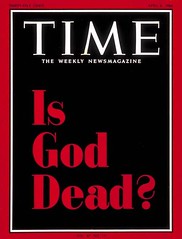Therefore, let us continue the discussion on Hollywood's newest darling - the microbudget movie. Shall we?
Note - if you have not already, please read Variety's recent article on Paramount's new microbudget division.
What is a microbudget film? Generally speaking, a "micro" budget is a feature film whose production costs run under approximately $2,000,000. Or rather, that is how a microbudget used to be defined. With today's digital technology, and the age of DIY filmmaking, today's microbudgets run much, much lower - try under $100,000 in production costs (the cap for the Paramount venture).
That amount sounds miniscule, when compared to the likes of AVATAR's mind-boggling $230,000,000 price tag, or even DISTRICT 9's modest $30,000,000 budget. That being
 said, yes, Virginia, you can make a feature film for $100,000. If you are British wunderkind Marc Price, you can make a feature film for $100. It might even be good.
said, yes, Virginia, you can make a feature film for $100,000. If you are British wunderkind Marc Price, you can make a feature film for $100. It might even be good.How do you do this? There are no rules. There are, however, a few suggestions from those who walk the microbudget walk:
1) Keep it simple. Contained stories. Clean plot lines. Limited locations - a mall, a building, a car, a home - and a limited cast. Actors cost money.

"I can take any empty space and call it a bare stage. A man walks across this empty space whilst someone else is watching him, and this is all I need for an act of theatre to be engaged." - Peter Brook, The Empty Space.
When you write for micro, you don't have the luxury to rely upon boffo lighting and sound, SFX and costume. Therefore you are served well to write as few characters as possible - andt write them well. Give them conflict, make them complex, and let them Show Don't Tell to a fare-thee-well. Read OPEN WATER ($130,000 USD). Note how much is jam-packed into the first five minutes: marriage in trouble, he's irresponsible, she's addicted to work, they have money troubles ... all expressed through brief bits of dialogue, through moments of impatience, the sound of a cell phone that seems to never stop ringing. Perfectly set up and executed in minutes.
 2) Be prepared to wear more than one hat. There are exceptions always, but it is doubtful that you will sell a micro script as nothing more than scribe; instead, you have to sell the whole package - and that means that you will be producing this little ditty. Enroll in a production boot camp, such as those offered by Dov Siemens or Reel Grok's Norman C. Berns. Learn how a film is made from start to finish (every screenwriter should know this anyway). Are you an actor/actress? If so, you might find yourself in the cast. Do you direct? You can join the likes of triple threat Ed Burns and his breakthrough film, THE BROTHERS MCMULLEN ($23,800 USD), Darren Aronofksy's double threat of writer/director in PI ($60,000 USD) and of course, the King himself, Robert Rodriquez and his dazzling writing/directing debut EL MARIACHI which roared onto the screen at $7,000 USD plus post.
2) Be prepared to wear more than one hat. There are exceptions always, but it is doubtful that you will sell a micro script as nothing more than scribe; instead, you have to sell the whole package - and that means that you will be producing this little ditty. Enroll in a production boot camp, such as those offered by Dov Siemens or Reel Grok's Norman C. Berns. Learn how a film is made from start to finish (every screenwriter should know this anyway). Are you an actor/actress? If so, you might find yourself in the cast. Do you direct? You can join the likes of triple threat Ed Burns and his breakthrough film, THE BROTHERS MCMULLEN ($23,800 USD), Darren Aronofksy's double threat of writer/director in PI ($60,000 USD) and of course, the King himself, Robert Rodriquez and his dazzling writing/directing debut EL MARIACHI which roared onto the screen at $7,000 USD plus post.3) Microbudget filmmaking is the ultimate Team Sport. Enlist family, friends, employers and anyone else in your circle to help bring your project to completion. Look at Alex Holdridge's IN SEARCH OF A MIDNIGHT KISS ($25,000 USD), Christopher Nolan's gem FOLLOWING ($6,000 USD) and countless films by John Waters. What do these films have in common? Friends. Friends have houses and businesses that can be used for locations. Your mother might cater a meal. Your neighbor might be an assistant/wrangler (for an associate producer credit, natch). Your police lieutenant brother-in-law might act as security. Scratch their backs...and ask them to scratch yours.
4) Take inventory. In keeping with number three, ask yourself "What are my assets? What do I have at my disposal - and at no or low costs?"before you begin your Beat Sheet. Do you work in a restaurant? Check out MY DINNER WITH ANDRE (precise budget unavailable). Do you own a purple La-Z-Boy? THE PUFFY CHAIR ($15,000 USD). An office? CLERKS ($27,000 USD plus post). A slightly altered look at the world and those who people it? ERASERHEAD ($10,000 USD). Competition is fierce; you might have to secure financing yourself. If you've done the work as described, you can provide a potential investor with an opportunity to be part of a creative process...and possibly show a nice profit as well.
5) Think outside the box. This applies to each and every facet of the process. It's easy to scare people with razor tipped hands, or starlets being stabbed in the breasts; it's not so easy to scare people with next to nothing - but it is not impossible. Think of new twists on old standards.
Outside box thinking also applies to distribution. Do you want to feed your ego, or do you want to feed your family? If your answer is the former, good luck to you on getting that big marquee and a nationwide opening. If, however, you are a forward thinker, look to downloads, to on-demand and other inexpensive ways of delivering media - and chuckle your way to the bank.
Microbudget isn't for everyone. You have to hone your skills as a writer. You must be able to evangelize your project - and yourself. You have to be fearless but not feckless; determined yet flexible, and above all, very, very organized. If attention to minutiae is not in your skill-set, time to look at the small picture. This frontier requires courage and commitment. Those lacking in focus and ambition need not apply.
~ HRH, The Princess Scribe
































